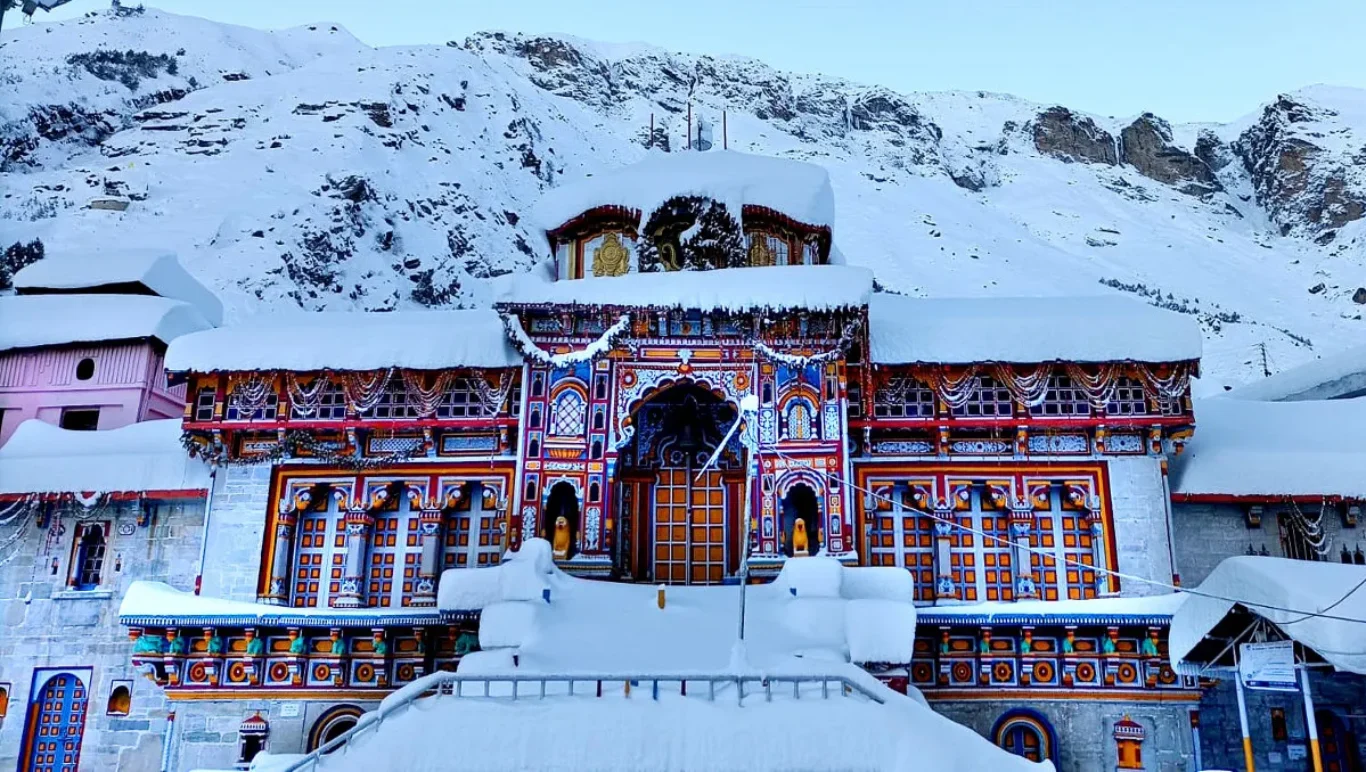Uttarakhand, the Land of Gods, has always attracted spiritual seekers from across the world. Among its vast network of holy shrines, two popular pilgrimage circuits stand out: Do Dham Vs Char Dham. Both journeys promise a spiritual awakening, but they differ in scale, duration, and experience. Whether you are a first-time pilgrim or a seasoned traveler, understanding these differences will help you plan a journey that suits your needs.
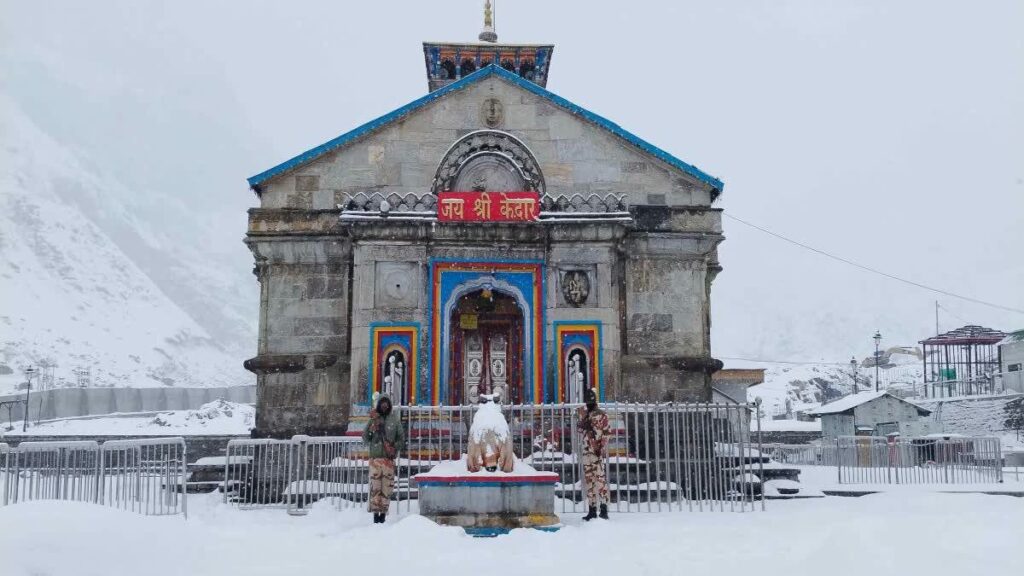
Understanding Char Dham Yatra
Char Dham means “four abodes” and refers to four revered temples in Uttarakhand:
Yamunotri: The Divine Source of the Yamuna River
The journey of Char Dham Yatra traditionally begins at Yamunotri, the source of the sacred Yamuna River. Dedicated to Goddess Yamuna, this temple holds immense spiritual significance for devotees seeking purification and blessings. The trek to Yamunotri is about 6 kilometers from Janki Chatti, offering a beautiful and sometimes challenging path through forests, mountains, and river streams.
Highlights of Yamunotri:
- Hot Springs: Before entering the temple, pilgrims often visit the natural hot springs of Surya Kund and Gauri Kund, which are believed to have healing properties.
- Scenic Beauty: The trek showcases lush alpine meadows, snow-dusted peaks, and the flowing Yamuna River, making it an unforgettable experience.
- Spiritual Vibes: Pilgrims can feel a sense of calm and devotion as they approach the temple, surrounded by the pristine Himalayan environment.
Yamunotri is not just a starting point; it sets the spiritual tone for the entire pilgrimage. Devotees often spend the night in nearby lodges or ashrams to acclimatize to the altitude before continuing their journey.
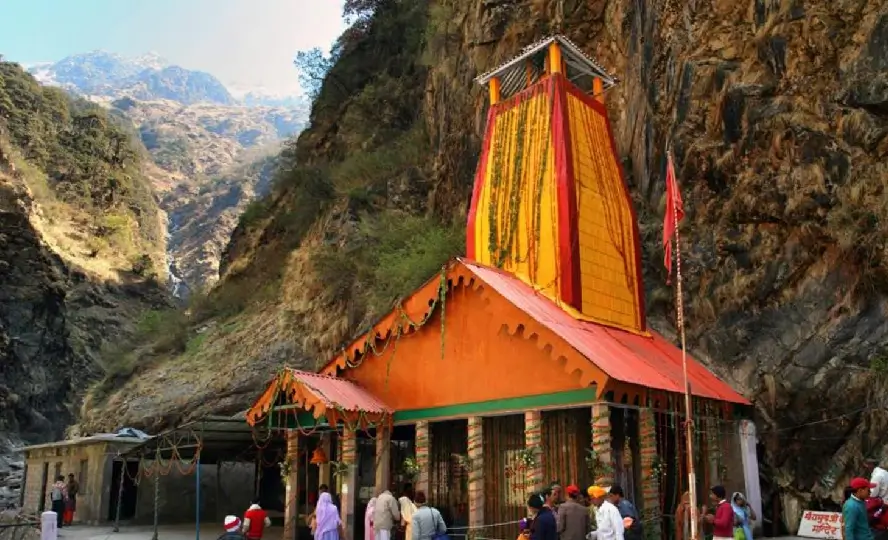
Gangotri: The Sacred Origin of the Ganges
From Yamunotri, the journey continues to Gangotri, the origin of the Ganga River, which is considered the most sacred river in India. The temple here is dedicated to Goddess Ganga, and visiting it is believed to cleanse one’s sins and grant spiritual merit.
What Makes Gangotri Special:
- Bhagirathi River: Pilgrims can witness the pristine river emerging from the Gangotri glacier, an experience that evokes awe and reverence.
- Trekking Experience: While the temple is easily accessible by road, short treks around the glacier area provide a more immersive connection with nature.
- Peaceful Surroundings: Unlike the crowded Kedarnath or Badrinath, Gangotri offers a serene atmosphere ideal for meditation and reflection.
Pilgrims often take a dip in the holy waters near Bhagirathi River banks, believed to purify both body and soul. Spending time in Gangotri helps devotees prepare for the more challenging parts of the Char Dham Yatra ahead.

Kedarnath: The Mighty Abode of Lord Shiva
Kedarnath is undoubtedly one of the most iconic temples in India, dedicated to Lord Shiva. Nestled at an altitude of 3,583 meters, it is surrounded by towering snow-capped peaks and the Mandakini River flowing nearby. The temple is a symbol of faith, resilience, and devotion, attracting thousands of pilgrims each year.
Highlights of Kedarnath:
- Historic Significance: The temple is believed to have been built by Adi Shankaracharya, and it holds immense historical and spiritual value.
- Challenging Trek: From Gaurikund, pilgrims have to trek about 16 kilometers to reach the temple, which tests endurance and faith. Helicopter services are available for those who prefer a quicker and safer route.
- Scenic Marvel: The trek itself is visually stunning, with Himalayan peaks, waterfalls, and valleys providing a breathtaking backdrop.
- Divine Aura: Many devotees report a deep sense of peace and spiritual awakening upon reaching the temple.
Kedarnath is often considered the most physically demanding part of the Char Dham Yatra. Proper preparation, acclimatization, and maintaining stamina are key to completing this leg of the journey comfortably.
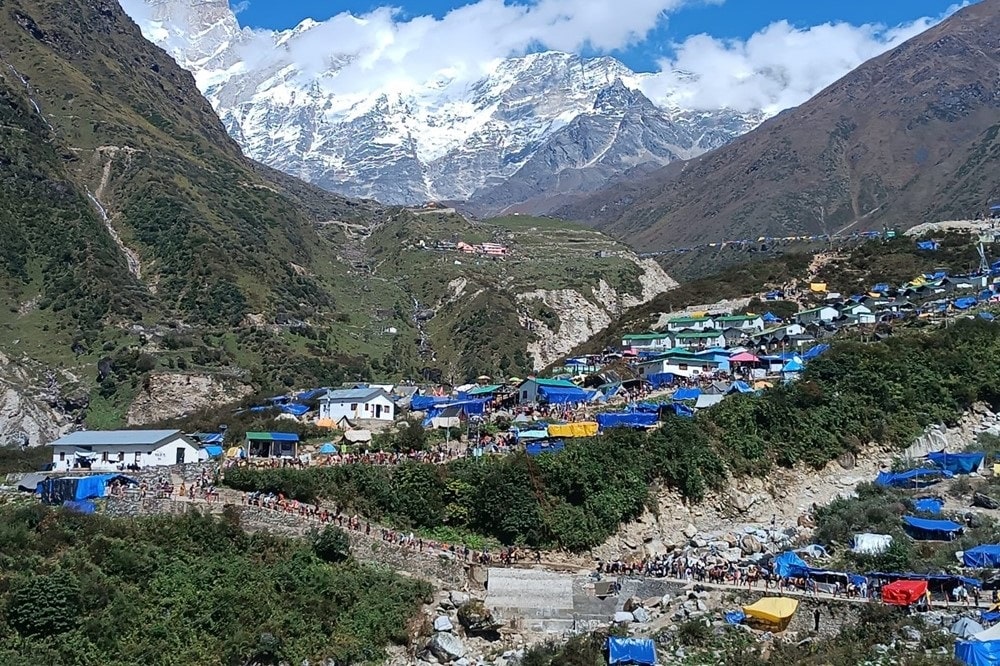
Badrinath: The Sacred Home of Lord Vishnu
The final temple of the Char Dham circuit is Badrinath, dedicated to Lord Vishnu. Located along the banks of the Alaknanda River, Badrinath combines spiritual significance with natural splendor. The temple town is surrounded by snow-covered peaks and lush green meadows, offering a serene and inspiring environment.
Why Badrinath is Special:
- Tapt Kund: A natural hot water spring near the temple, believed to have healing properties, where devotees take a ritual bath.
- Mana Village: The last village before the Tibet border, Mana offers insights into local culture, traditions, and handicrafts.
- Temple Rituals: Devotees can witness morning and evening aarti ceremonies, enhancing the spiritual experience.
- Accessibility: Unlike Kedarnath, Badrinath is more easily accessible by road, making it suitable for all age groups.
Badrinath not only serves as the spiritual conclusion of the Char Dham Yatra but also allows pilgrims to reflect on the entire journey and soak in the serenity of the Himalayas.
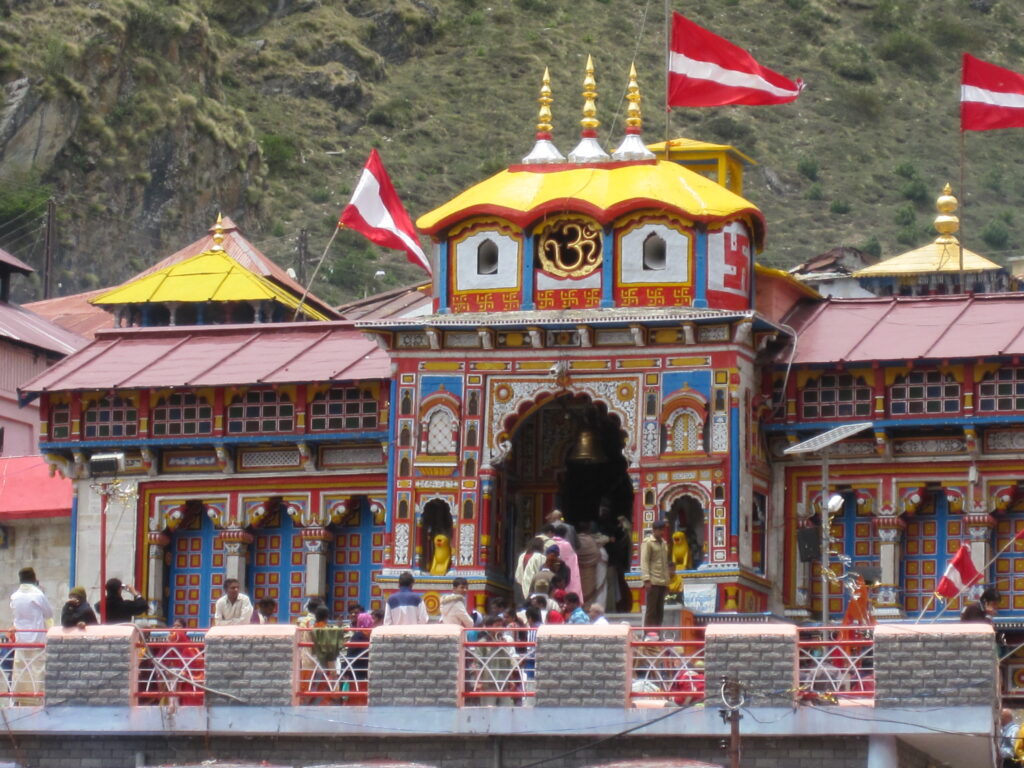
What Makes Do Dham Yatra Different
The Do Dham Yatra focuses on Kedarnath and Badrinath, making it shorter and more accessible.
Key Features of Do Dham Yatra:
- Duration: 5–7 days
- Distance Covered: Roughly 400–450 km
- Ideal For: Elderly pilgrims, families, travelers with limited time
- Challenges: Moderate trekking, manageable travel time
- Scenic Highlights: Himalayan peaks, Alaknanda River valley, and the spiritual aura of Kedarnath
Advantages of Do Dham Yatra:
- Shorter, less physically demanding
- Concentrates on two major shrines with deep spiritual significance
- Easier to plan in terms of accommodation and logistics
- More budget-friendly due to shorter duration
Comparison Table: Char Dham vs Do Dham
| Feature | Char Dham Yatra | Do Dham Yatra |
|---|---|---|
| Number of Temples | 4 (Yamunotri, Gangotri, Kedarnath, Badrinath) | 2 (Kedarnath, Badrinath) |
| Duration | 10–15 days | 5–7 days |
| Travel Intensity | High | Moderate |
| Ideal For | Pilgrims seeking a comprehensive spiritual journey | Pilgrims with time or physical constraints |
| Scenic Diversity | Extensive: forests, glaciers, rivers, valleys | Limited: focused around Kedarnath and Badrinath |
| Cost | Higher | More affordable |
Best Time to Undertake Each Yatra
Both Char Dham and Do Dham are seasonal pilgrimages, primarily open from April/May to October, depending on weather and snow conditions.
- Pre-Monsoon (April–June): Moderate temperatures, fewer crowds, suitable for families
- Peak Summer (July–August): Lush green landscapes, risk of landslides in Char Dham
- Post-Monsoon (September–October): Clear skies, perfect for photography and serene spiritual experience
Pro Tip: Avoid the monsoon season (July–August for some routes), as landslides can disrupt the journey, especially in Char Dham.
Travel Experience: What to Expect
Char Dham Yatra
- Yamunotri Trek: Moderate uphill trek to the temple with hot springs nearby.
- Gangotri Visit: Spiritual cleansing at the Ganga source and breathtaking Himalayan scenery.
- Kedarnath Trek: 16 km uphill trek from Gaurikund or helicopter option.
- Badrinath Stay: Relaxing experience with accessible roads and scenic views.
Do Dham Yatra
- Kedarnath Visit: Focused pilgrimage with less trekking intensity; spiritual immersion.
- Badrinath Visit: Offers ample time to experience the local culture, shopping, and spiritual activities.
Bonus Tip: Do Dham is perfect for weekend pilgrims or those traveling with seniors or children.
Spiritual Significance
- Char Dham: Holistic spiritual experience covering the four major deities and river origins; considered life-changing.
- Do Dham: Concentrated spiritual journey; while shorter, it still offers divine blessings from Lord Shiva and Lord Vishnu.
Fun Fact: Many devotees who cannot complete Char Dham due to time or health limitations prefer Do Dham and still feel spiritually fulfilled.
Suggested Itinerary: Char Dham Yatra
Char Dham is a longer journey, so a well-structured itinerary ensures a smoother experience. Here’s a practical 12-day plan:
Day 1: Arrival at Haridwar or Rishikesh
- Perform Ganga Aarti in the evening
- Overnight stay
Day 2: Haridwar/Rishikesh → Yamunotri
- Drive to Janki Chatti
- Trek 6 km to Yamunotri Temple
- Stay overnight in nearby guesthouse
Day 3: Yamunotri → Gangotri
- Morning trek back to Janki Chatti
- Drive to Gangotri
- Evening darshan and Ganga Arti
Day 4: Gangotri → Uttarkashi → Sonprayag
- Explore Uttarkashi temples
- Stay in Sonprayag
Day 5: Sonprayag → Kedarnath
- Drive to Gaurikund
- Trek or helicopter to Kedarnath
- Evening darshan and stay
Day 6: Kedarnath → Gaurikund → Guptkashi
- Early morning darshan
- Trek back to Gaurikund
- Overnight stay at Guptkashi
Day 7: Guptkashi → Badrinath
- Scenic drive through Rudraprayag & Joshimath
- Evening relaxation at Badrinath
Day 8–10: Badrinath exploration
- Visit Tapt Kund, Mana village, and local markets
- Optional short treks nearby
Day 11–12: Return journey
- Badrinath → Rishikesh → Haridwar
- Conclude yatra with farewell Ganga Aarti
Suggested Itinerary: Do Dham Yatra
Do Dham is shorter and can be comfortably done in 5–6 days:
Day 1: Arrival at Rishikesh/Haridwar
- Evening Ganga Aarti
- Stay overnight
Day 2: Rishikesh → Kedarnath
- Drive to Gaurikund
- Trek or helicopter to Kedarnath
- Evening darshan
Day 3: Kedarnath → Badrinath
- Trek back to Gaurikund
- Drive to Badrinath via Rudraprayag
- Evening darshan and local sightseeing
Day 4: Badrinath exploration
- Tapt Kund, Mata Murti Temple, Mana village
- Free time for shopping and relaxation
Day 5: Badrinath → Haridwar/Rishikesh
- End yatra with spiritual fulfillment
Cost Comparison
While costs vary depending on travel mode, accommodation, and season, here’s a general overview:
Char Dham Yatra
- Budget range: ₹18,000–₹35,000 per person
- Factors: Long duration, multiple stays, transportation, meals, trekking costs
Do Dham Yatra
- Budget range: ₹9,000–₹18,000 per person
- Factors: Shorter duration, fewer accommodations, optional helicopter rides
Tips to Save:
- Book early for accommodations in high season
- Opt for shared taxis instead of private cabs
- Carry packed snacks to avoid frequent roadside food stops
Local Experiences Along the Yatra
Food:
- Kedarnath: Simple vegetarian meals, local “Aloo Puri” and “Rajma Chawal”
- Badrinath: Freshly prepared “Bhatt ki Churdkani” and “Pahadi Thali”
Culture:
- Observe local rituals at small shrines on the way
- Interact with temple priests and locals to learn about regional legends
Scenery:
- Char Dham: Vast Himalayan valleys, glaciers, and river confluences
- Do Dham: Serene rivers, snow-clad mountains, and calm village settings
Tips:
- Capture photos early morning or late afternoon for best lighting
- Respect local customs, avoid loud music or non-vegetarian food near temples
Frequently Asked Questions
Q1: Which yatra is easier for elderly pilgrims?
A: Do Dham is less physically demanding and suitable for senior citizens, while Char Dham requires more endurance.
Q2: Can I complete Char Dham in one week?
A: It is not recommended; rushing can reduce the spiritual experience and cause travel fatigue.
Q3: Are helicopter services available?
A: Yes, both Kedarnath and Badrinath have optional helicopter services for faster and safer access.
Q4: What is the best season to undertake the yatra?
A: April to October is ideal. Avoid heavy monsoon months due to landslide risks.
Q5: Can I do Do Dham and Char Dham together?
A: Yes, many pilgrims start with Do Dham if short on time and plan a full Char Dham later.
Q6: What should I pack for the yatra?
A: Trekking shoes, warm clothing, rain gear, water bottle, medications, portable charger, and snacks.
Which One Should You Choose?
- Choose Char Dham if you have ample time, enjoy long treks, and want the full spiritual and scenic experience.
- Choose Do Dham if you have limited time, prefer a moderate trek, or are traveling with elderly or children.
Both journeys offer divine blessings, unforgettable memories, and breathtaking Himalayan landscapes. Your choice depends on your time, physical stamina, and spiritual goals.

